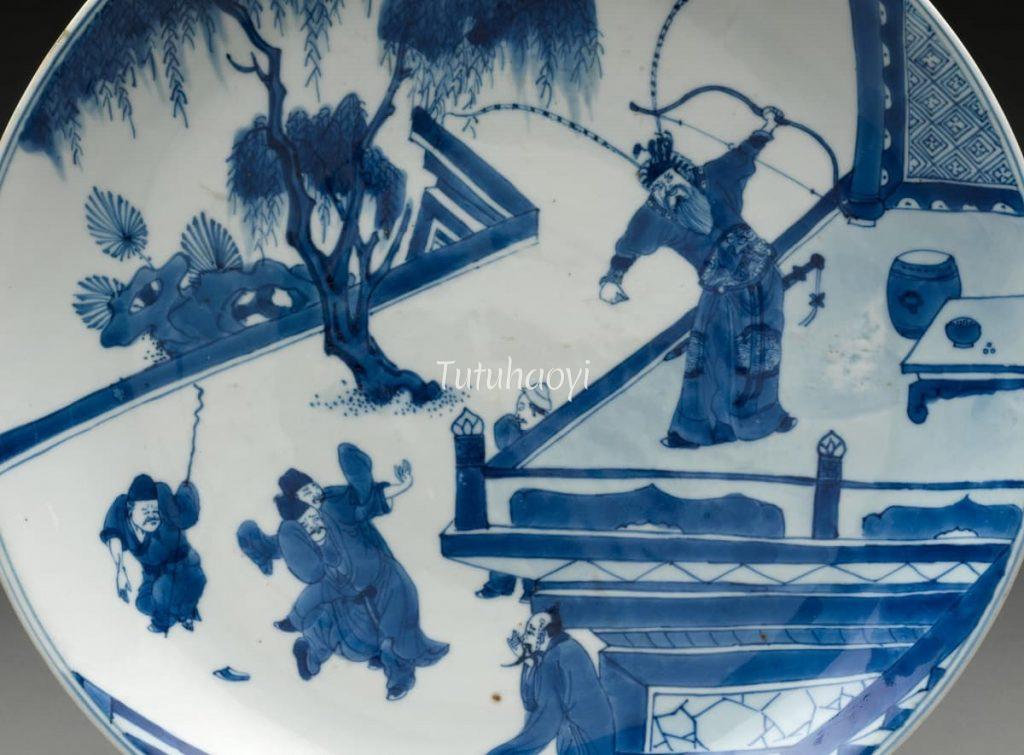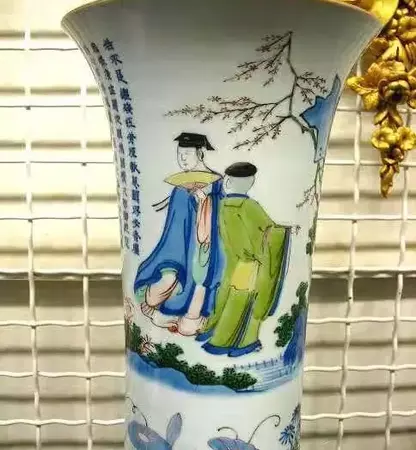Story scenes painted on Chinese porcelains are sometimes mysterious and challenging to understand. Dr Yibin Ni, whose specialised research is to demystify figures and story scenes, and decode motifs, symbols and pun rebuses in Chinese art, is here to tell the modern world about a story that happened two and a half thousand years ago in ancient China.
image above: blue-and-white dish (detail), Kangxi period (1662-1722), Qing dynasty, courtesy of the Metropolitan Museum of Art, NY
The Jesuit father Joseph Henri Marie de Prémare translated into French a 13th-century play The Great Revenge of the Orphan of Zhao (赵氏孤儿大报仇), attributed to the Chinese playwright Ji Junxiang (纪君祥) in 1731 and he titled it L’Orphelin de la Maison de Tchao. It was the earliest Chinese play known to the Europeans. The French philosopher Voltaire adapted it into L’Orphelin de Chine in 1755. The warm welcome to a piece of Chinese literary work at the height of the vogue of chinoiserie is vindicated by an oil painting entitled Reading of Voltaire’s tragedy of the Orphan of China in the salon of Marie Thérèse Rodet Geoffrin, finished in 1812.

The tragedy’s English adaptation by Arthur Murphy, The Orphan of China, was first staged at David Garrick’s Theatre Royal, Drury Lane, London in 1759. The acclaimed actor Mary Ann Yates (1728-1787) played the leading female role Mandane and the character’s full-length portrait was first exhibited at the annual exhibition organised by the Society of Artists in London in 1765. This imagined characterisation from the mysterious Cathay had a long-lasting impact on the cultured class in England.

Up to today, The Orphan of Zhao is still the only Chinese play that has left an imprint on drama in the West. The original story of The Orphan of Zhao was set in the State of Jin (晋), a major power during the Spring and Autumn period (春秋, 771-476 BCE). When the old duke passed away, his heir was still in the cradle. It was with the powerful minister Zhao Dun (赵盾)’s support that he succeeded in ascending the throne. Unfortunately, the young duke became increasingly the opposite of an ideal ruler. When the righteous Zhao Dun tried to alter the young duke’s misbehaviours by repeated remonstrances, he aroused resentment in the duke’s heart, who subsequently made several attempts on his life. In the play, the duke’s favourite general and Zhao’s political enemy, Tu’an Gu (屠岸贾), murdered over 300 lives of the Zhao clan in the name of the duke, with only Zhao Dun’s grandson being survived through the sacrifice and efforts made by those of Zhao’s friends who believed in justice.
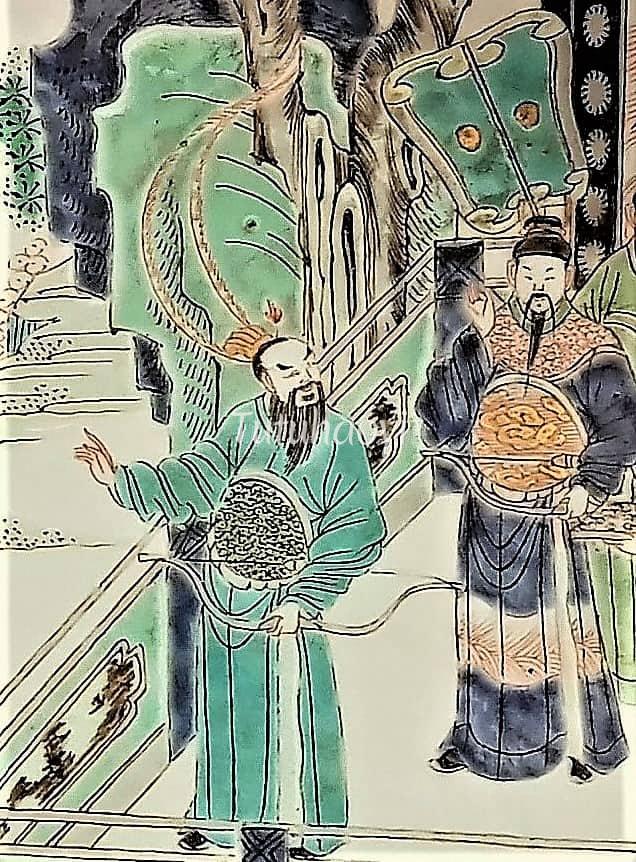
The young duke was posthumously given the title Duke Ling of Jin, Jìn Líng Gōng (晋灵公, ? – 607 BCE). In Chinese history, he has been known as a ‘ruler who does not deserve his title’ (bu jun 不君). His despotic behaviour was enumerated in the records by historiographers. For example, he levied heavy taxes to build more fancy palaces; he had the chef killed only because he didn’t cook his bear paws soft enough; and, when he was bored with shooting birds and animals in his ever-expanding parks, he whimsically indulged in shooting his ministers and pedestrians with catapult slingshots from his palatial terrace and enjoyed watching the victims suffering from the hazard and ducking the pellets.

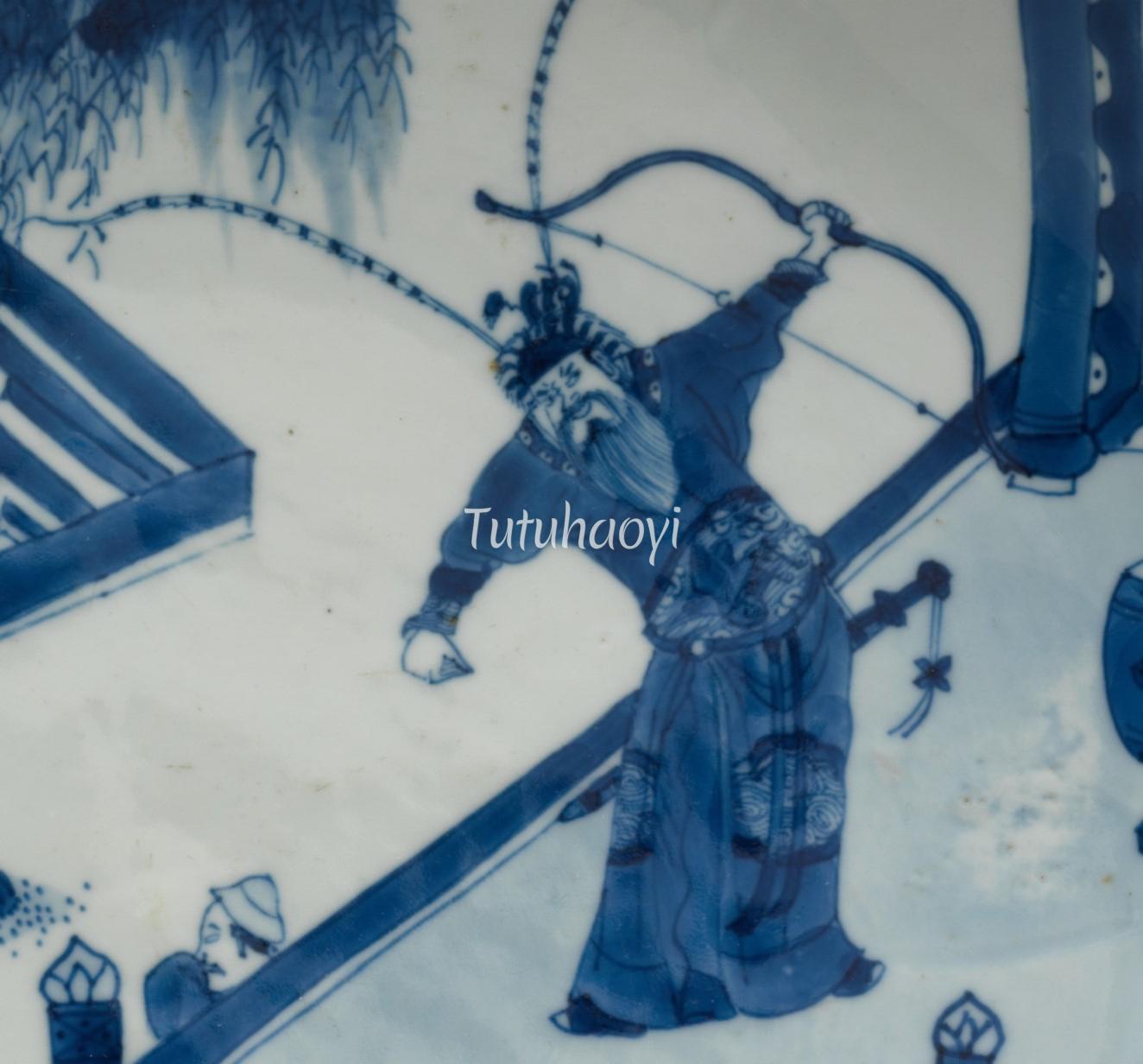
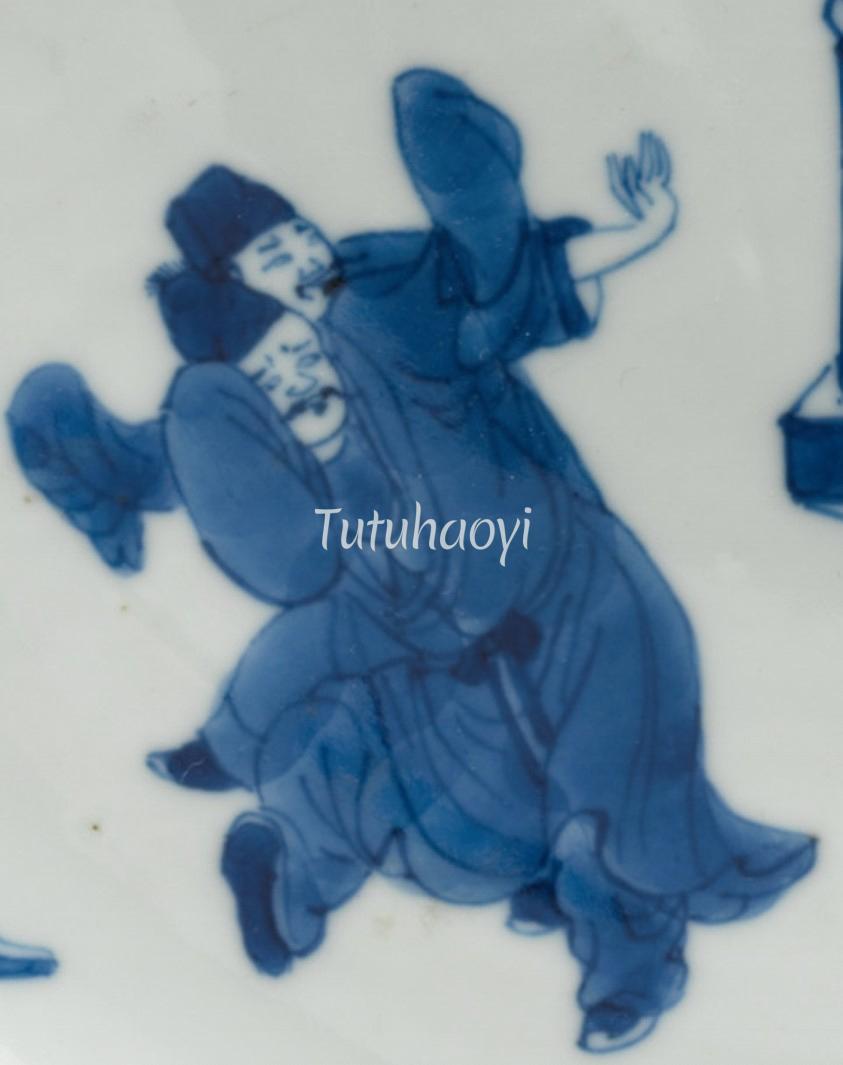
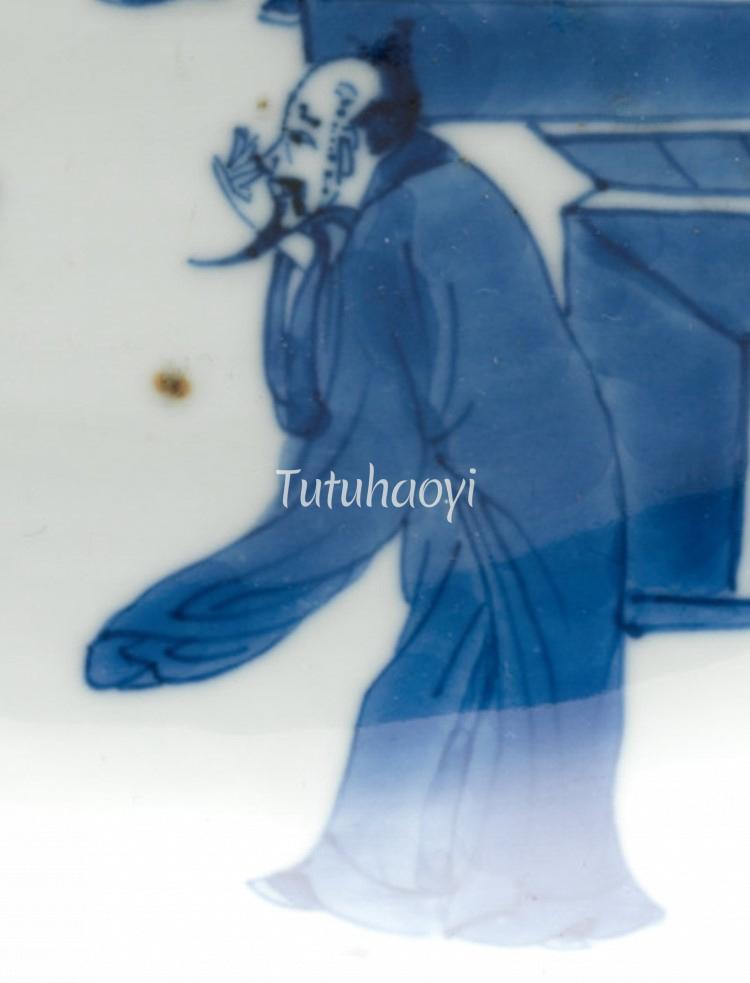
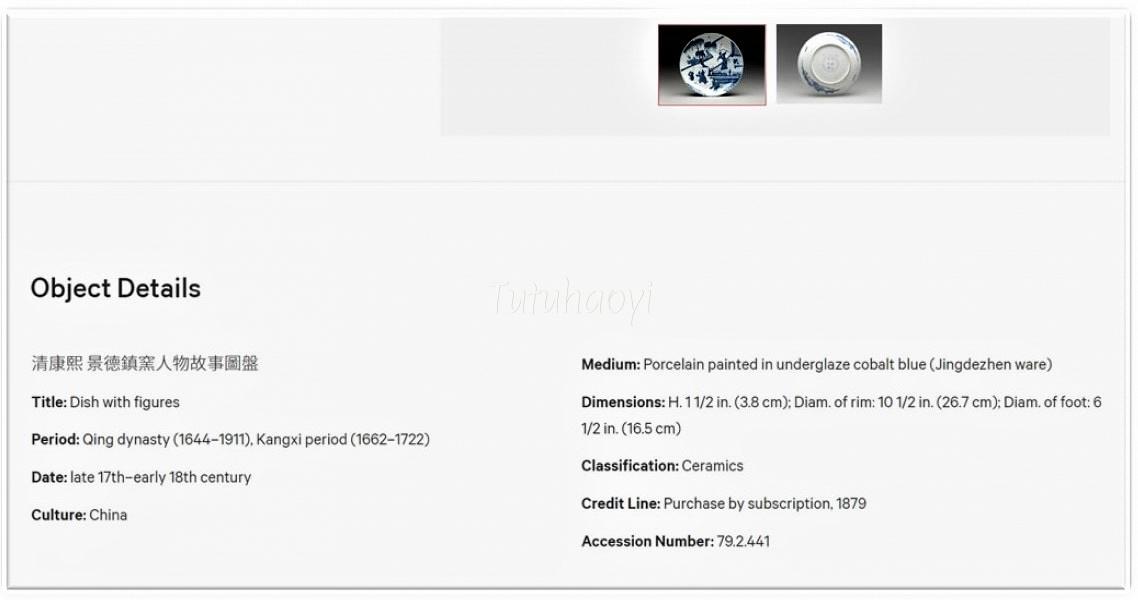
In imperial China, history was written and images were created to commemorate good deeds and condemn evil acts of significant figures in the past. Many of such images were adopted by porcelain makers to embellish the then high-tech products. There is a Kangxi dish in the collection of the Metropolitan Museum of Art, New York, which bears a rare and unusual scene in its well. It is, in fact, a scene of Duke Ling of Jin enjoying watching pedestrians ducking the pellets when he mischievously shoots them for fun from his royal terrace. The scene may well have been a page from an imperial textbook compiled to coach young emperors with historical lessons and then spread around as a didactic picture to warn rulers. However, these related thought-provoking anecdotes seem to have been lost in the contemporary world, even becoming obscure to our culture-guardian museum curators. The curator simply labelled it ‘dish with figures’ in the online catalogue.


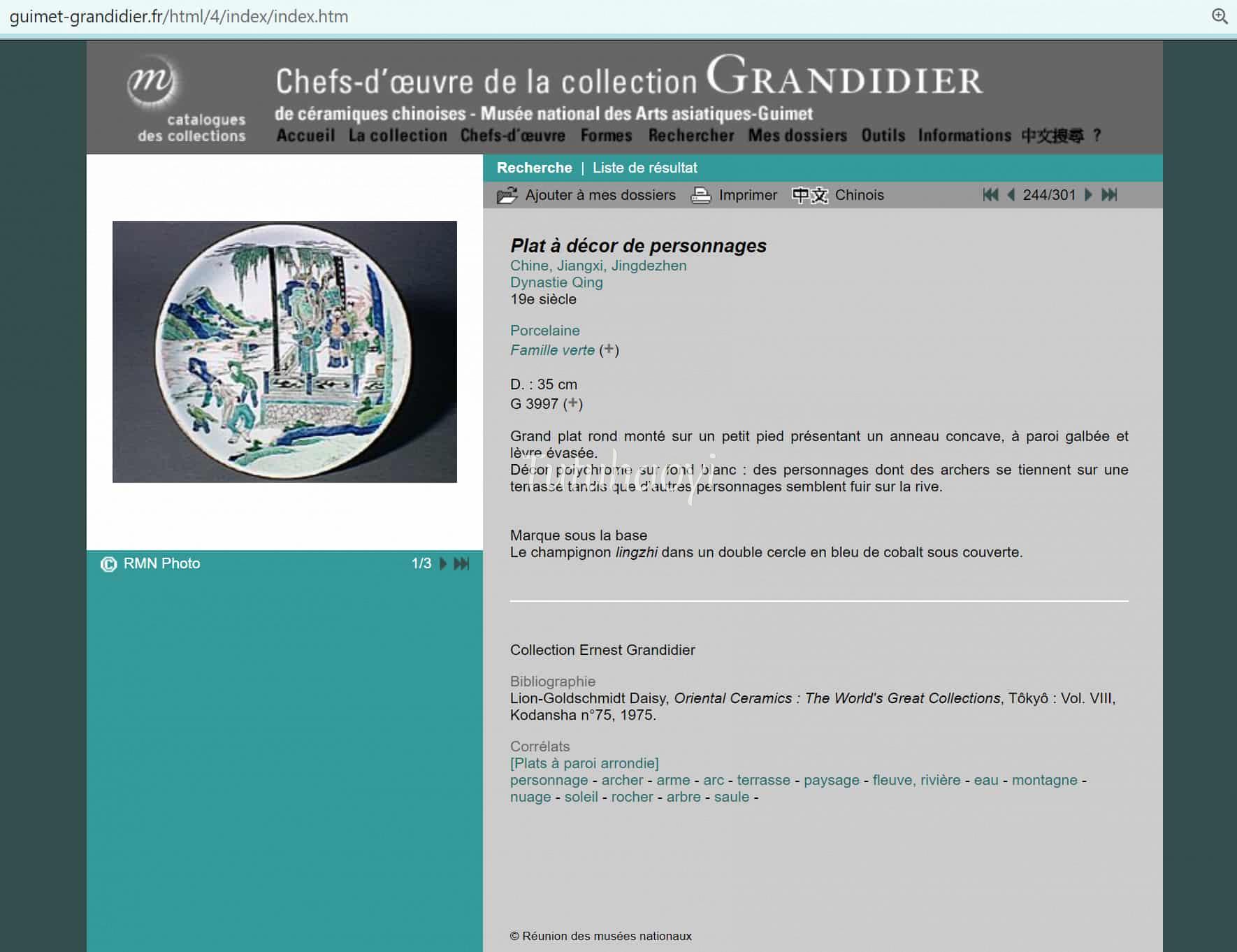
There is a 19th-century polychrome dish bearing a colored version of the same scene in the collection of the Guimet Museum, Paris. The museum’s online catalogue description of it says, ‘figures including archers stand on a terrace while other figures seem to flee on the shore’.
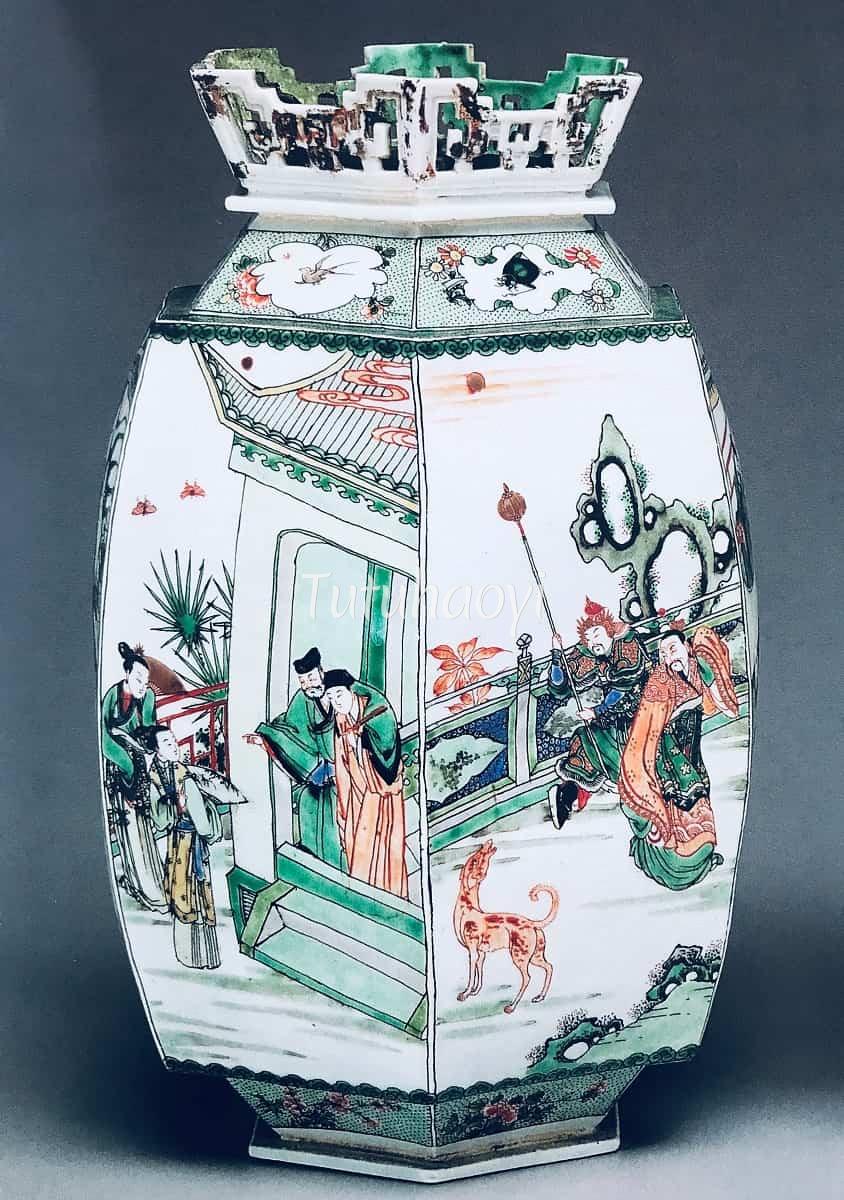
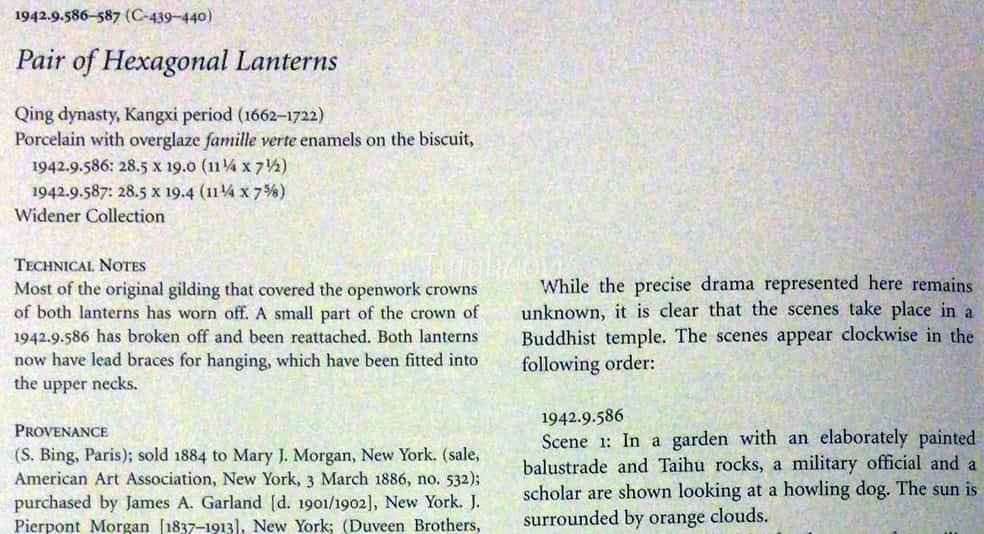
The National Gallery of Art, Washington DC, has a Kangxi porcelain lantern on which there is a scene described in the Collections of the National Gallery of Art Systematic Catalogue simply as ‘a military official and a scholar are shown looking at a howling dog.’
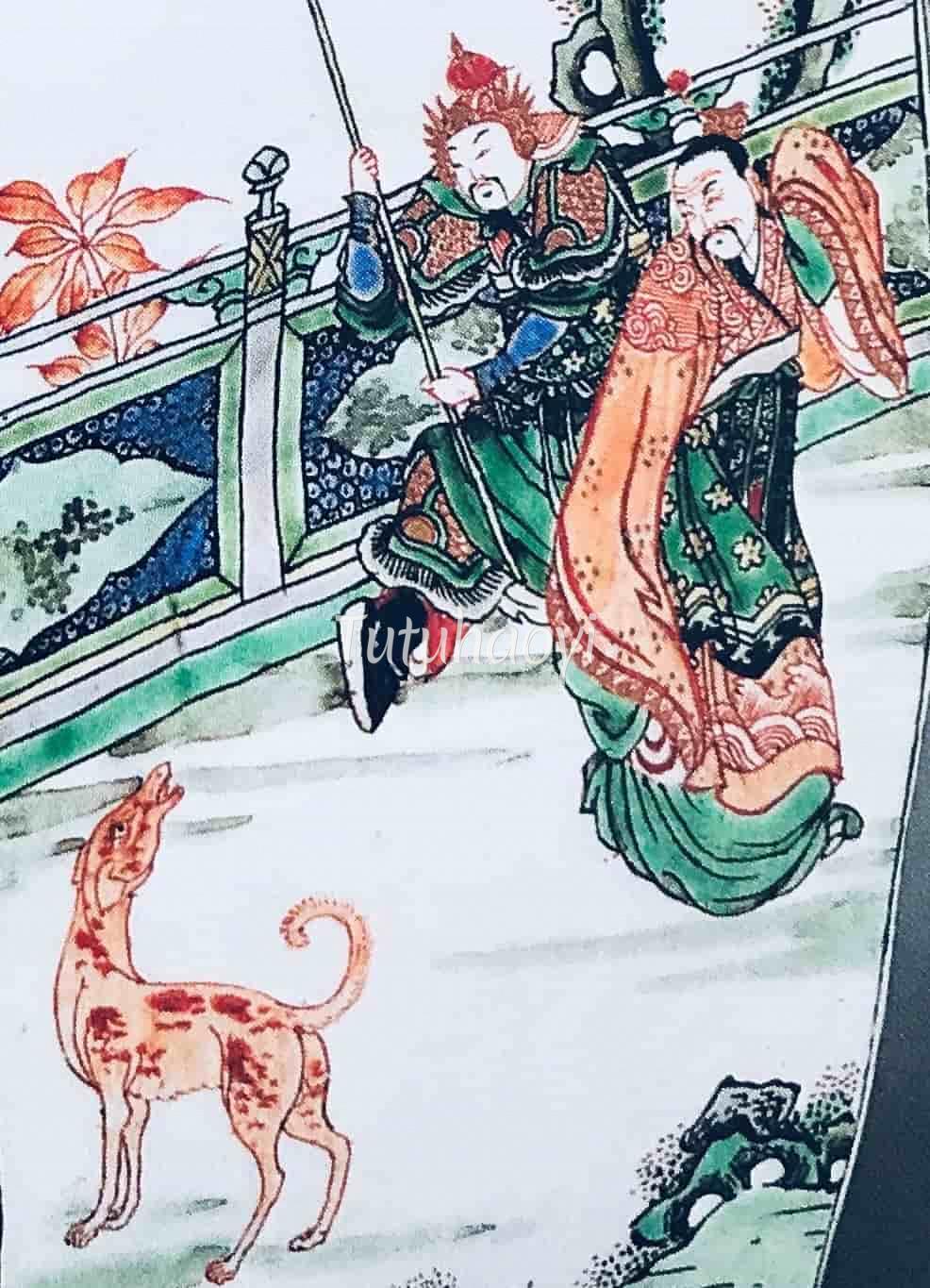
In fact, this scene portrays one of the duke’s vicious attempts on Zhao Dun’s life. He made the excuse to invite Zhao to drink with him while soldiers were gathered to ambush him. Zhao’s retainer Timi Ming (提弥明) realised the plot and rushed to the table to rescue his master. When Zhao was supported to leave the place, the duke sent his immense dog to attack him. Timi was a valiant fighter and he smote the brute and put an end to it. This scene appeared in Chinese history as early as the Eastern Han dynasty (东汉, 25 CE – 220 CE) and served as a classic admonishing example for statesmen and rulers alike.
The findings and opinions in this research article are written by Dr Yibin Ni.
